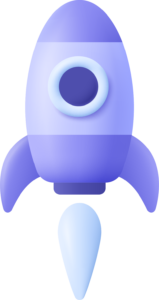Understanding Laravel Development
Because of its robust features, developer-friendly ecosystem, and elegant syntax, Laravel has completely changed PHP web development. This article offers a thorough overview of Laravel development by examining its essential elements, advantages, and real-world uses.
- MVC Architecture
- Blade Templating Engine
- Eloquent ORM
- Security and Performance
- Community and Ecosystem
Dlite Info Tech
Why Laravel Development is Crucial for Modern Web Applications

Why Laravel Development is Crucial for Modern Web Applications
The vast ecosystem, developer-friendly environment, and robust features of Laravel have made it a vital framework for modern online applications. The importance of Laravel development in the current digital environment is examined in this essay, which also highlights some of its main benefits and useful uses.
Dlite Info Tech Craft Beautiful Websites That Attract And Convert!
We excel in crafting compelling websites that not only capture attention but also yield outcomes. With a team of proficient designers and developers, we’re committed to elevating your online presence into a stunning showcase. We grasp the significance of crafting not only aesthetically pleasing but also practical websites that captivate and convert visitors into devoted patrons.

what you get
Key Benefits of Laravel Development
When you engage with Numerique in Laravel development, you gain access to our comprehensive range of services tailored to optimize every facet of your web application development journey. Our expertise encompasses:
Elegant Syntax and MVC Architecture
Expressive and Readable Syntax: Laravel’s syntax is designed to be elegant and expressive, making code writing more intuitive and enjoyable for developers. This clarity enhances readability and reduces the learning curve for new team members, fostering efficient collaboration.
Separation of Concerns: Laravel adheres to the Model-View-Controller (MVC) architectural pattern, which divides an application into three interconnected components:
- Model: Represents the data and business logic of the application.
- View: Presents the data to the user and handles user interactions.
- Controller: Manages user requests, interacts with models, and determines which views to present.
Code Organization and Maintainability: MVC promotes separation of concerns, allowing developers to manage different aspects of the application independently. This modular approach improves code organization, simplifies debugging, and enhances maintainability by isolating changes within specific components without affecting the entire application.
Scalability and Flexibility: By separating responsibilities into distinct layers, Laravel’s MVC architecture facilitates scalability. Developers can extend or modify each layer independently to accommodate evolving business requirements and application growth. This flexibility ensures that applications built with Laravel can scale seamlessly as user demands and complexity increase.
Blade Templating Engine
Intuitive Syntax: Blade offers a clean and intuitive syntax for creating templates in Laravel. It uses familiar PHP syntax with additional directives that simplify common tasks such as rendering data, including sub-views, and control structures.
Template Inheritance: Blade supports template inheritance, allowing developers to define a base layout (master template) and extend or override sections in child templates. This feature promotes code reusability and helps maintain consistent layouts across multiple pages.
Includes and Components: Blade facilitates the inclusion of reusable components and partials within views using the
@includedirective. Developers can break down complex UI elements into smaller components, making views more modular and easier to maintain.Control Structures: Blade provides convenient control structures such as
@if,@else,@foreach, and@whilethat simplify conditional rendering and looping through data. These directives enhance code readability and reduce the need for inline PHP scripting within templates.
Eloquent ORM (Object-Relational Mapping)
Database Table to PHP Object Mapping: Eloquent simplifies database interactions by mapping database tables to PHP objects. Each database table has a corresponding “model” in Laravel, representing a specific entity or resource in the application.
CRUD Operations: Eloquent provides an expressive syntax for performing CRUD (Create, Read, Update, Delete) operations on database records using object-oriented methods. Developers can create new records, retrieve existing ones, update attributes, and delete records using familiar PHP syntax.
Relationships and Associations: Eloquent allows developers to define relationships between models, such as one-to-one, one-to-many, and many-to-many relationships. These relationships are defined using methods like
hasOne,hasMany,belongsTo,belongsToMany, etc., making it easy to work with related data and perform eager loading or lazy loading as needed.Query Building: Eloquent offers a fluent query builder interface that enables developers to construct complex database queries using method chaining. This approach allows for dynamic query building based on application logic and conditions, enhancing flexibility and readability.
Built-in Features and Libraries
Authentication and Authorization: Laravel provides a robust authentication system out-of-the-box, including user registration, login, password reset, and session management. It also supports role-based access control (RBAC) and provides middleware for securing routes and resources based on user roles.
Routing System: Laravel’s routing system allows developers to define application routes using a simple and expressive syntax. Routes can be grouped, named, and assigned middleware to handle HTTP requests effectively. This system simplifies routing configuration and enhances control over application endpoints.
Caching: Laravel offers a unified API for caching, supporting popular cache backends such as Memcached and Redis. Developers can cache query results, views, and other computationally expensive operations to improve application performance and reduce database load.
Queueing and Task Scheduling: Laravel’s queueing system facilitates asynchronous processing of time-consuming tasks. It integrates with queue backends like Redis, Amazon SQS, and Beanstalkd, allowing developers to delay execution of tasks, handle background jobs, and manage job priorities. Additionally, Laravel’s task scheduling feature automates recurring tasks using a cron-like syntax, enhancing application reliability and efficiency.
Community Support and Ecosystem
Vibrant Community: Laravel boasts a large and active community of developers worldwide. Community members actively contribute to forums, social media groups, and open-source projects, offering support, sharing knowledge, and collaborating on improving the framework.
Extensive Documentation: Laravel provides comprehensive and well-organized documentation that serves as a valuable resource for developers. The documentation covers everything from installation and configuration to advanced features and best practices, enabling developers to quickly learn and effectively use Laravel.
Packages and Extensions via Composer: Laravel’s ecosystem includes a wide range of packages and extensions available via Composer, a PHP dependency manager. These packages extend Laravel’s functionality and integrate with third-party services, offering solutions for various needs such as payment gateways, API integrations, and more.
Laravel Forge and Envoyer: Laravel offers specialized services like Laravel Forge for server management and Laravel Envoyer for deployment automation. These services provide convenient tools for developers to manage servers, deploy applications, and monitor performance seamlessly within the Laravel ecosystem.
Security and Performance Optimization
Built-in Security Features: Laravel prioritizes security with built-in features such as:
- CSRF Protection: Laravel automatically generates CSRF tokens for each active user session to protect against cross-site request forgery attacks.
- XSS Protection: Laravel escapes output by default to prevent cross-site scripting attacks.
- SQL Injection Prevention: Eloquent ORM and Laravel’s query builder use prepared statements and parameter binding to mitigate SQL injection vulnerabilities.
Authentication and Authorization: Laravel provides a robust authentication system with features like:
- Authentication Scaffolding: Easily integrate user registration, login, and password reset functionalities.
- Authorization: Define access control policies using gates and policies to restrict user access based on roles and permissions.
Performance Optimization Techniques: Laravel offers several techniques to optimize application performance, including:
- Caching: Utilize Laravel’s built-in caching system to store and retrieve frequently accessed data from cache stores like Memcached or Redis.
- Database Query Optimization: Use Eloquent’s lazy loading, eager loading, and query optimizations to minimize database queries and improve response times.
- Queueing and Job Processing: Offload time-consuming tasks to background queues using Laravel’s queueing system, reducing response times and improving application responsiveness.
Monitoring and Debugging Tools: Laravel provides tools for monitoring and debugging application performance, including:
- Logging: Laravel supports logging errors, warnings, and informational messages to files, databases, or external services for troubleshooting and auditing purposes.
- Debugging: Utilize Laravel’s debugging tools, such as detailed error messages and stack traces, to diagnose and resolve issues quickly during development and production.
Creating Success
Why Laravel Development Services Excel in Today's Market
Robust Ecosystem and Community Support
Laravel boasts a vibrant community of developers and enthusiasts who contribute to its growth and innovation.
Modern and Expressive Syntax
Laravel's elegant syntax and MVC architecture streamline development processes, making it easier to write clean, readable code.
Scalability and Performance Optimization
With built-in caching mechanisms, database query optimizations, and support for asynchronous job processing through queues, Laravel enables developers to build scalable and high-performance applications.
“Numerique PPC service is light years ahead of the competition because of their intelligent, specialized and courteous account managers.”
Director of Marketing

Laravel Development: Showcasing Effective Solutions with Reflective Success
Laravel has emerged as a frontrunner in the realm of web development, revered for its robust capabilities and streamlined workflows. This article explores how Laravel development exemplifies effective solutions that lead to reflective success in modern web applications.
Results-Driven
Client-Centric
Innovative Techniques
Client Success Stories
FAQ
FAQs about Laravel Development
Would you like to learn more about developing CodeIgniter for your websites? Look over our FAQs:
Laravel is a PHP framework known for its elegant syntax, robust features, and supportive community. It simplifies web application development with features like MVC architecture, Eloquent ORM, and Blade templating engine. Developers choose Laravel for its productivity, scalability, and extensive ecosystem of packages.
Installing Laravel is straightforward using Composer, a PHP dependency manager. Simply run composer create-project --prefer-dist laravel/laravel project-name in your terminal to set up a new Laravel project. Detailed installation instructions can be found in Laravel’s official documentation.
Laravel includes essential features such as:
- MVC Architecture: Separates application logic (Models), presentation (Views), and user interaction (Controllers).
- Eloquent ORM: Simplifies database interactions and relationships.
- Blade Templating Engine: Offers a simple yet powerful syntax for creating views.
Laravel offers several tools and techniques for optimizing application performance:
- Caching: Utilize Laravel’s caching system to store and retrieve frequently accessed data.
- Database Optimization: Use Eloquent’s query builder and ORM features to optimize database queries.
- Queueing: Offload time-consuming tasks to background queues using Laravel’s queueing system, improving application responsiveness.


